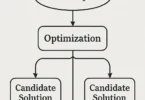Visualizing the SFM Compile Process: Turning Raw Scenes into Stunning Animations
Imagine you have this epic idea for an animation. You build the scene in Source, add characters, lights, and effects. However, nothing appears until you compile the code. That’s when the magic happens. SFM compile takes your raw work and turns it into a video you can finally share.
This step is crucial for creators. Hobbyists use it to make fun clips for friends. Pros rely on it for YouTube hits or Workshop uploads. Without a smooth compile, your project stays stuck. You waste time fixing glitches instead of creating something new.
In this guide, we cover it all. From basics to pro tips, you’ll learn how to set up, run, and tweak SFM compile. Get ready to make your animations shine faster. Let’s dive in and boost your workflow.
Understanding SFM Compile Basics
SFM compiles the heart of your animation pipeline. It processes files to create final outputs. Beginners often skip learning this and face significant hurdles later.
What is SFM Compile and Why It Matters
SFM compilation means rendering your scene data into videos or images. You start with .dmx files that hold your animation details. The tool crunches that info using Source’s engine.
This process finalizes everything from models to effects. It bakes in lighting and motion for smooth playback. Skip it, and your work isn’t viewable outside the editor.
Common errors occur, such as missing textures. Always check dependencies first. For example, link all custom models properly. This avoids crashes and saves hours. Think of it as the oven for your animation dough—raw at first, but golden when done.
Setting Up Your SFM Environment for Compilation
You need solid hardware to handle SFM compilation well. Aim for at least 8GB of RAM and a decent GPU, such as an NVIDIA GTX 1060. Steam must run Source smoothly as well.
Install the tool through Steam. Verify files to catch issues early. Download mods from Workshop if you use extras.
Here’s a quick checklist:
- Update graphics drivers.
- Free up disk space—compiles eat 10GB or more.
- Set file paths in SFM settings.
- Test a small scene to check stability.
Follow these, and your setup hums along. No more surprise halts mid-render.
Standard File Formats and Their Role in Compilation
- .dmx files store your scene layout and timelines. They’re the blueprint for SFM compile.
- .vmt for material settings and .vtf for textures. These ensure that colors and details remain consistent throughout the rendering process.
- Outputs: You receive .mp4 videos or image sequences, such as .tga frames. Use the exporter for clean conversions.
Trouble hits with custom assets. If a mod’s format mismatches, the compile fails. Fix it by using tools like GIMP for textures. Always test formats in a preview. This keeps your compile workflow smooth and error-free.
Step-by-Step Guide to Running SFM Compile
Ready to compile? This guide walks you through it. Follow along, and you’ll render like a pro.
Preparing Your Scene for Compilation
- Organize your timeline. Group clips and set keyframes properly.
- Check lighting. Bright spots can wash out details.
- Particles and effects add flair, but they also slow things down. Lower counts in preview mode.
Tips:
- Bake animations for static parts.
- Hide unused elements.
- Save versions before significant changes.
Your scene now primes for success.
Executing the Compile Command
Open Source and load your project. Go to the export menu or command line for control.
In the app, pick “Queue for Render.” The input is your .dmx file, and the output is directed to a folder of your choice.
For command line power:
sfm.exe -i scene.dmx -o output.mp4 -w 1920 -h 1080 -fps 30
Batch multiple scenes by listing files. Run overnight for big jobs.
Monitoring and Troubleshooting During Compilation
- SFM shows a progress bar in its console.
- Crashes? Often from memory overload—close other apps.
- Long time? Check PC heat.
- Enable logging: -logfile compile_log.txt.
If stuck, head to Steam forums and search “SFM compile crash.” The community shares fixes and scripts.
Advanced SFM Compile Techniques
Once you have mastered the basics, please take it to the next level with professional methods.
Optimizing Compile Settings for Faster Renders
- Use ‘-high‘ for top quality and ‘-low‘ for test runs.
- Multi-threading: -threads eight on modern CPUs.
- Drafts at 720p, finals at 4K.
- Disable shadows/fog for speed boosts.
Integrating Custom Assets and Mods
- Import models from Workshop or DeviantArt.
- Link with relative paths: usermod/models/character.mdl.
- Test small: Compile a single pose first.
- Pro tip: sfm.exe -mymod isolates mod-specific compiles.
Batch Compilation and Automation Scripts
Automate for series work. Example batch file:
@echo off
sfm.exe -i scene1.dmx -o out1.mp4
sfm.exe -i scene2.dmx -o out2.mp4
pause
For larger projects, Python scripts automate job loops and log results.
Best Practices and Common Pitfalls in SFM Compile
Ensuring High-Quality Outputs and File Management
- Check frame rate (24–60 fps).
- Color grade in DaVinci Resolve.
- Clever file naming: projectname_v02_1080p.mp4.
- Back up .dmx masters to cloud.
- Organize folders for inputs, outputs, and logs.
Avoiding and Fixing Frequent Errors
- Missing textures → Wrong file paths.
- Out of memory → Lower texture sizes or split scenes.
- Update Source via Steam weekly.
- Clear temp folders.
- Invalid model → Re-download or fix from forums.
Performance Tips for Large Projects
- Break into parts: intro, middle, end.
- Compile segments, then stitch in editing software.
- Use proxy models for tests.
- One animator phased renders for 20 characters—time dropped from hours to minutes.
Conclusion
SFM compile unlocks the true power of Source. It transforms sketches into full animations you can share widely.
Key points to remember:
- Prep your scenes well.
- Optimize speed settings.
- Use logs, forums, and scripts to troubleshoot smart.
Now grab your project and run that compile. Watch your animation come alive. Your next viral hit might just be one compile away.
For readers interested in exploring more practical tech-related solutions, you can check out our detailed step-by-step resource here: Fix Software Kollgod2.2 Guide.






